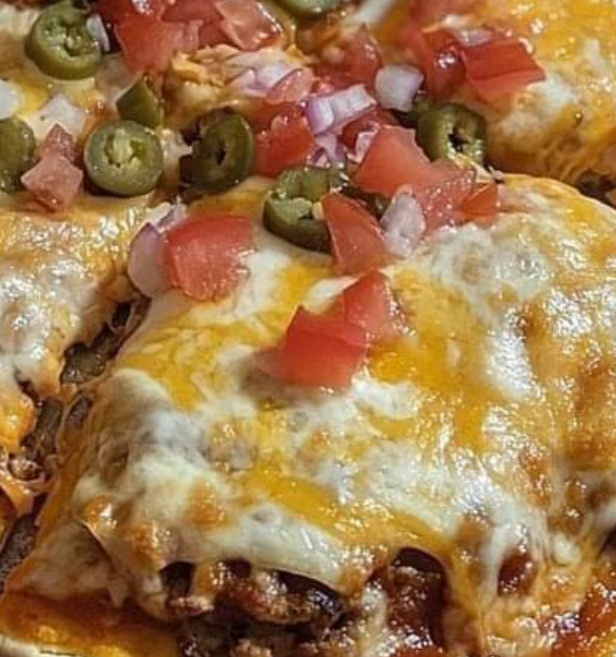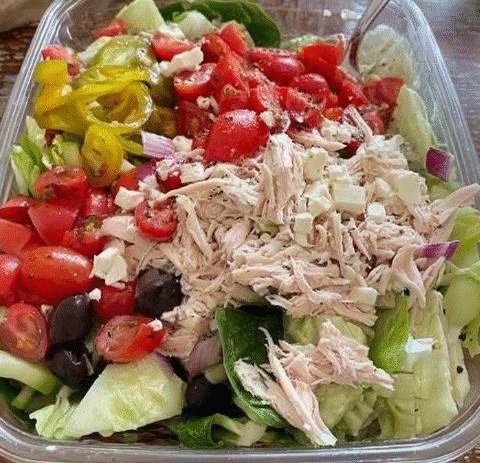Cabbage & Eggs Dinner Recipe: A Flavorful Weeknight Favorite
Looking for something hearty, easy, and nutritious for dinner tonight? This cabbage & eggs recipe is here to save the day. With crunchy cabbage, tender carrot, and well‑seasoned eggs, it’s a dish that hits all the right notes—comforting, flavorful, and quick to pull together. 🍽️
Chef Gordon Ramsay sometimes says that the kitchen isn’t about complexity—it’s about texture, flavor, and respect for the ingredients. Here, simple components join forces to become something memorable. Let’s dive in.
What You’ll Need
Ingredients
- 1 small cabbage (about 500‑600 g), shredded or thinly sliced
- 1 onion, finely chopped (medium size)
- 1 carrot, grated (medium size)
- 2 eggs
- 4 tablespoons flour (all‑purpose or a mix, see tips below)
- Salt, to taste
- Black pepper, to taste
- Paprika, to taste
- Dried garlic (powder or flakes), to taste
- Olive oil (for frying)
Optional Add‑Ins & Variations
- A pinch of chili flakes or cayenne if you like heat.
- Fresh herbs like parsley or dill for garnish.
- Use whole‑grain flour or chickpea flour for a gluten‑free / higher‑fiber version.
- Add grated cheese on top (cheddar, parmesan) for extra richness.
Step‑by‑Step Directions
Preparation
- Wash the cabbage and remove any tough outer leaves. Shred or thinly slice it.
- Peel and finely chop the onion.
- Wash, peel if necessary, and grate the carrot.
- Crack the eggs into a bowl and beat lightly; set aside.
Cooking
- Heat a large skillet or frying pan over medium heat. Add a couple of tablespoons of olive oil.
- When the oil is hot, add the chopped onion. Cook until translucent, about 3‑4 minutes.
- Add the grated carrot. Sauté for another 2‑3 minutes until it starts to soften.
- Add the shredded cabbage. Stir well. Cover and cook for 5‑7 minutes, stirring occasionally, until cabbage softens but still has some crunch. If needed, add a splash of water to prevent sticking.
- Season with salt, black pepper, paprika, and dried garlic. Adjust to taste.
- Sprinkle in the flour and stir to distribute. The flour helps bind the vegetables and gives a slightly thicker texture.
- Push the vegetables to the side, or form a well in centre of pan, then pour in the beaten eggs. Allow them to set slightly, then scramble gently and mix into the cabbage mixture.
- Cook for another minute or two until eggs are fully cooked. Taste and adjust seasonings.
Chef Tips & Tricks 🍳
- Don’t over‑cook cabbage: A bit of crispness gives texture and prevents the dish from turning mushy.
- Flour alternatives: Using a lighter flour (like whole‑wheat or chickpea) adds fiber and a nutty flavor.
- Eggs timing: Adding eggs near the end gives better control over their texture—they should be tender, not rubbery.
- Oil quality: Good olive oil adds flavor, but if your pan temperature is high, a mix with a neutral oil helps avoid burning.
- Season gradually: Start with less salt & spice, then taste and adjust. Paprika can vary in strength.
Nutrition & Health Benefits
| Nutrient | Amount per Serving* | Why It Matters |
|---|---|---|
| Calories | Approx. 200‑250 kcal | Great for a light dinner that still feels satisfying. |
| Protein | ~10‑12 g | Eggs add high‑quality protein, helping muscle repair and satiety. |
| Fiber | ~5‑7 g | Cabbage & carrot help with digestion and keeping you full longer. |
| Vitamins & Minerals | Good sources of vitamin C, vitamin K, vitamin A (from carrot), folate, potassium | Support immune health, blood clotting, eye health, etc. |
| Fats | ~10‑12 g (mostly from olive oil + egg yolk) | Healthy mono‑ and polyunsaturated fats help absorption of fat‑soluble vitamins and protect heart health. |
*Based on ~2 servings; values may vary depending on exact ingredient amounts & oil used.*
Health & Safety Considerations
- Make sure cabbage is washed thoroughly—residue or dirt between leaves can harbor bacteria.
- Cook eggs until they are firm (no runny whites), especially if serving to children, elderly, pregnant people, or immunocompromised individuals.
- Use fresh eggs (check best‑by date), and store them properly beforehand.
- If using dried garlic or spices, ensure they are fresh—not stale—to avoid off‑flavors or loss of efficacy.
- Keep the pan food safety in mind: avoid cross‑contamination (e.g. from raw eggs to other surfaces or foods).
Why This Recipe Works
According to Chef Bobby Flay, balance in a dish comes from texture contrasts and seasoning layers. In this recipe, the crunchy cabbage + soft eggs + aromatic onion & carrot + spices give you a satisfying mouthfeel and flavor journey. It’s humble ingredients done well. Plus, it’s very adaptable—add what you love, leave out what you don’t.
Internal Resources You Might Like
- The Benefits of Leafy Greens — understanding why cabbage is such a powerhouse.
- Easy Weeknight Egg Recipes — more ways to use eggs for protein‑packed meals.
Frequently Asked Questions (FAQs)
Q1: Can I make this recipe vegan?
Yes. Replace the eggs with a plant‑based alternative: silken tofu (crumbled), chickpea flour batter, or “just eggs” style vegan products. You might need to increase flour or add a little plant milk or water so texture holds.
Q2: Can I use frozen cabbage instead of fresh?
Frozen cabbage works, but when thawed it releases more water. Drain well and reduce cooking liquid accordingly so the dish doesn’t become soggy.
Q3: How do I store leftovers?
Cool quickly and store in an airtight container in the fridge. Use within 2‑3 days. To reheat, gently warm on stovetop with a splash of water or oil.
Q4: Can I freeze it?
Yes, though eggs may change texture after freezing (may become a bit rubbery). Freeze in portions; when reheating, use low heat and possibly a little extra moisture.
Q5: What can I serve with this for a complete meal?
It’s great on its own or paired with a whole‑grain, crusty bread, a simple salad, or roasted veggies. A side of yogurt or cottage cheese also complements the flavors.
Q6: Can I add meat or protein besides eggs?
Certainly. Cooked bacon, chopped cooked chicken, or crumbled sausage could fit in. Add these after cabbage is softened. Adjust seasoning accordingly.
Q7: How do I adjust the seasoning for mild vs spicy?
Start with small amounts of paprika and dried garlic. To add heat, use smoked paprika, chili flakes, or cayenne. Taste as you go, since spice levels vary widely.
Q8: Is this a good recipe for meal prep?
Yes. It reheats well and holds up for a couple of days. If prepping ahead, slightly undercook the cabbage‑egg mix so it doesn’t overcook when reheated.
Q9: Can I use alternative flours if gluten intolerant?
Absolutely. Chickpea flour, rice flour, or a gluten‑free blend all work. You may need to adjust moisture and cooking time slightly.
Q10: What’s the best way to clean up & reduce waste?
Save vegetable scraps for stock (cabbage core, onion ends). Use a non‑stick pan or one that’s well seasoned to reduce oil usage. Clean up any oil splatters promptly.
Conclusion
If you’re craving something simple yet satisfying, this cabbage & eggs dinner delivers. It’s packed with flavor, nutrition, and can be modified to suit your dietary preferences. Whether you’re cooking for yourself or the family, this recipe is a keeper—Chef Ina Garten would approve! 🥬🥚
Enjoy your meal, and don’t forget to experiment with seasonings—that’s how favorite recipes are born!






